I always found it interesting to read or hear how other photographers create their images and to learn about their workflow.
The two books which have influenced my photography the most are Ansel Adams’ Examples: the Making of 40 Photographs and “First Light” by Joe Cornish in which both authors talk about their image making process.
Over the years my gear has improved quite a bit but what has improved even more is my photographic process and I am sure that this is much more important. If I had to use the Konica Minolta Dynax 7d with that Minolta 2.8-4/17-35 today, which was my first serious camera the results would be much better than those my 18-years-old self took back in 2006, because since then I have learned a lot about light, improved my composition, can operate a camera by intuition and know when to use which setting.
My post processing has improved as well, back in the day I shot raw because I had read that raw is superior to jpg and that every serious photographer shoots raw, not because I had any idea how to really work with a raw file.
I don’t think that my 18-years-old self would have taken significantly better images with a Sony a7 because my photography was trial and error, sometimes I got a decent image but neither would I have recognized most photo opportunities nor could I have reliably turned the image I saw in front of me into a decent photograph.
What I really want to say that gear isn’t the key to better photographs, mastering the photographic process is much more important. And I hope to help other photographers to become better photographers and also to learn about other people’s workflow, there are many photographers out there which are much better than I am and I still have a long way to go.
The things I photograph
Most of my images depict nature, they range from macro to landscape images but nature is the major theme in most of them. Most of these images are taken close to my home, no more than 30 bicycle minutes away. Walking by the same motives again and again has taught me to see how much influence light has on images.
I also like to travel and photograph, but because when I am traveling with other people who aren’t photographers I can’t plan for the best light, I found that it is highly dependent on chance how my images turn out.
Occasionally I do shoot events for a society and I also take photographs when I am out with friends but while I am proficient at that kind of photography I am not particularly good at it either.
The hunt for good light
It took me many years to realize, how important light is for my pictures. Quite often I am asked about my processing because people like the look of my images and while good post processing (pp) is important, good light is much more important for the look of my images, because no pp in the world can turn a picture taken with boring light into a great one.
Good light comes in many different flavors but I prefer the light around sunset and sunrise.
That many of my most liked subjects can be reached in no more than 10 minutes makes planning for the light much easier, I can set my alarm to maybe 30 minutes before sunrise, get out of bed to check the sky and if it looks promising I will be on location 15 minutes later. If it is too cloudy for a good sunrise I will simply return to bed for a bit more sleep.
I am not always lucky with the light and it happens often, that a cloud blocks the sun in the last moment or that the sky turns hazy, but most of the times I can take some decent images and be at home 1 hour later.
And then there are those days when the light is absolutely glorious. It happens maybe 2 or 3 times a year, but when conditions are perfect I can capture some sublime images.
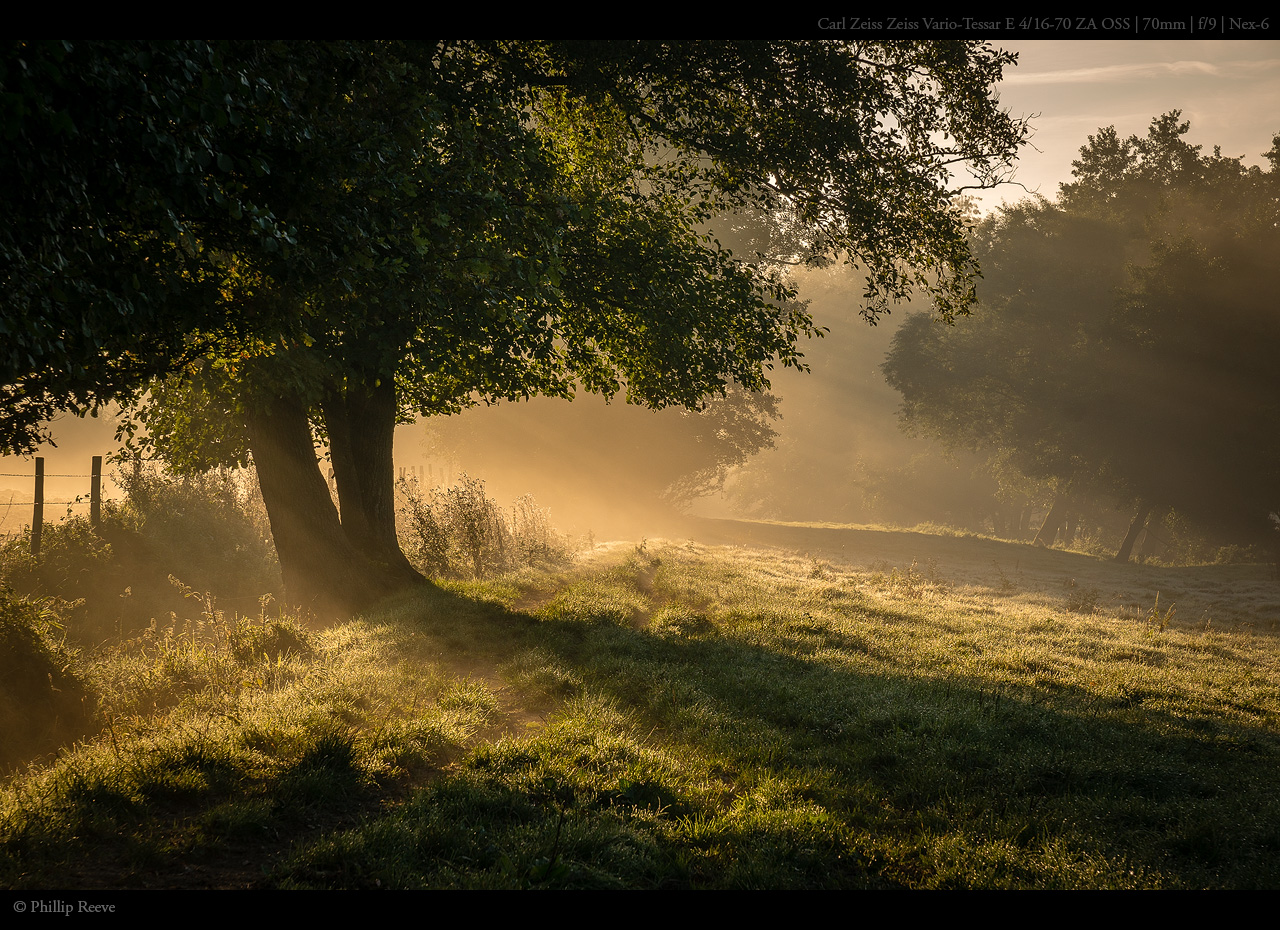
this was such a morning, it was early autumn and the weather had been great the days before but I had no time for photography so this Saturday morning I set an early alarm and captured some of my favorite images in 2013.
Right now it is winter so it is easier for me to schedule for sunrise, in the summer I prefer the sunset because I don’t like to get up at 4 in the morning.
Packing my camera bag
My camera bag is big enough for 3 smaller and 1 bigger lens and my Sony A7, most often I have a Sigma 2.8/24, a Minola MD 3.5/35-70, a Minolta 1.2/58 or MD 2/50 and a Canon FD L 4/80-200 or my Tokina 2.5/90 with me but I have a few other lenses as well.
Also in my camera bag are a spare battery (not because I have ever drained one in a shooting but because I forgot to put one in the camera in the past), a spare sd card (same reason) and a 10mm spacer.
Most often I carry a small tripod with a decent ball head with me which can be clipped to my bag.
Looking for subjects
As mentioned before my favorite genre is my local landscape. I have a standard route which I cycle most of the time, it is changing every few weeks but not by much.
The pond in the image above for example is 200m away from the old willow in the image before and less than 5 bike minutes from my home. I come across it on almost every tour but most often I don’t take a picture because the light isn’t right.
But there are times when they light is great and conditions are great so I could take 20 images, each better than all the images I took the weeks before.
Like this day in late July 2012 when the sun was already low and flying seeds were filling the air, turning the mood somewhat magical.
Some hundred meters further there is a second pond, smaller and much darker than the first with an old, moss covered oak lying in it. Because there is much vegetation around the pond, shielding it from 3 directions from most of the light the light usually has a special quality to it and I stop almost always to snap a picture of the oak.
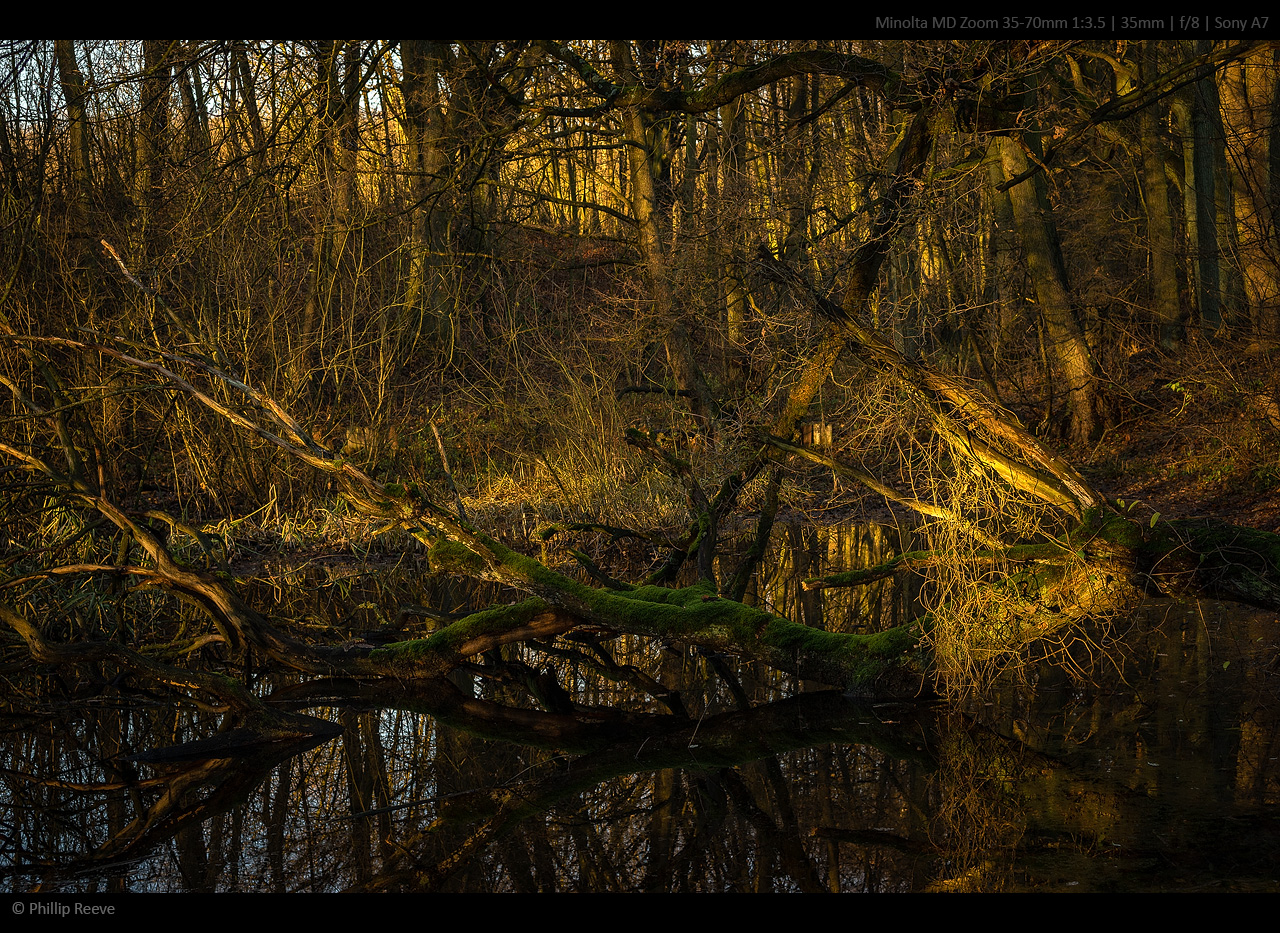
I follow the field track, cross a brook and a street and arrive at the next farm at which I take 1 or 2 images of an old mill and a flock of sheep.

inside the mill
I then leave my bike and walk half a kilometer before I reach the old weir were the water for the mill was derived so many years ago.
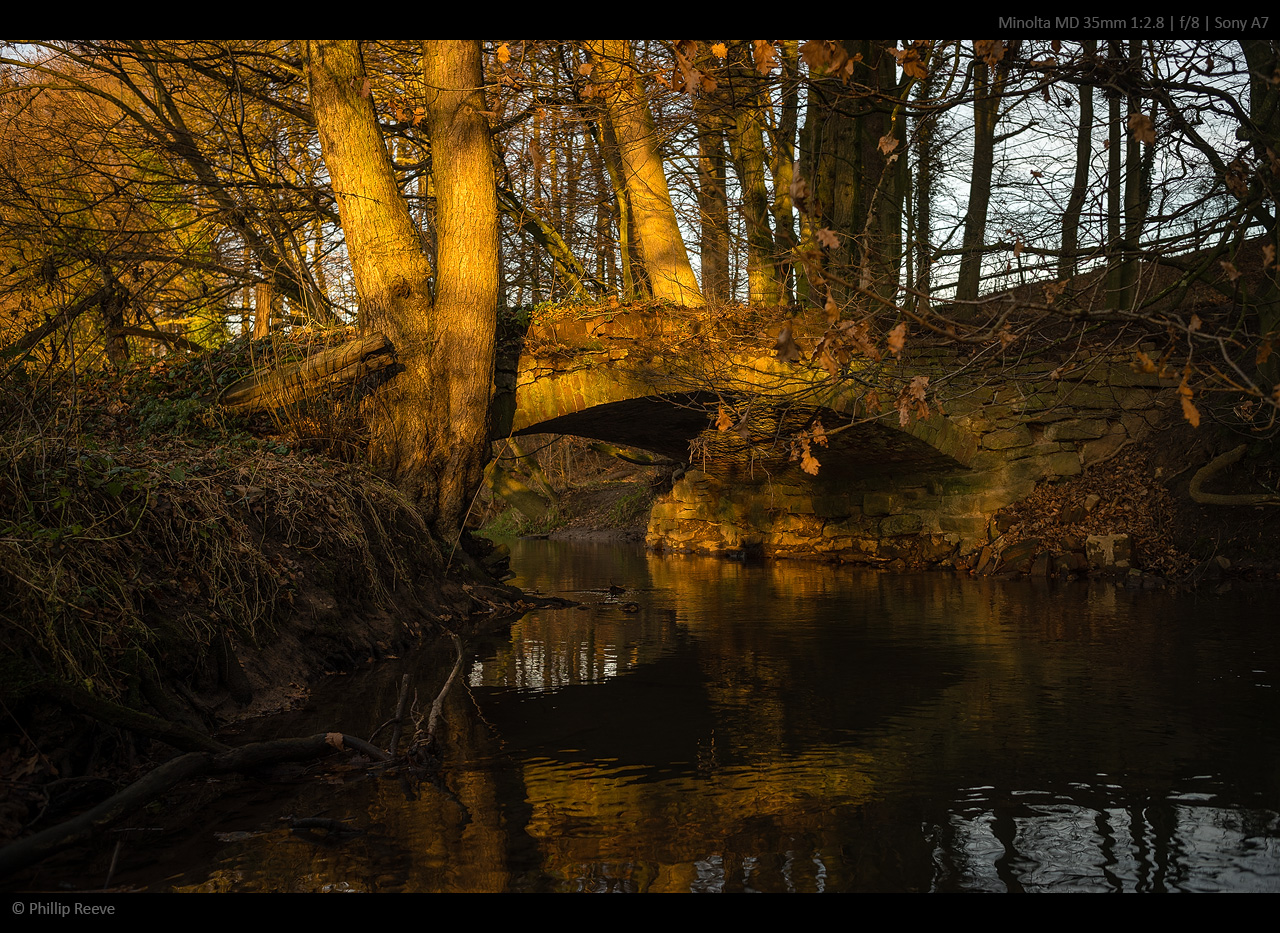
How I create Images – Part 2: Working with the Sony a7
How I create Images – Part 3: Postprocessing
This site contains affiliate links. If you make a purchase using any of the links marked as affiliate links, I may receive a small commission at no additional cost to you. This helps support the creation of future content.
Latest posts by Phillip Reeve (see all)
- Review: Samyang AF 75/1.8 FE - April 12, 2021
- The FE-List now has 113 lenses on it - March 25, 2021
- 2020 – Year’s end review - December 28, 2020

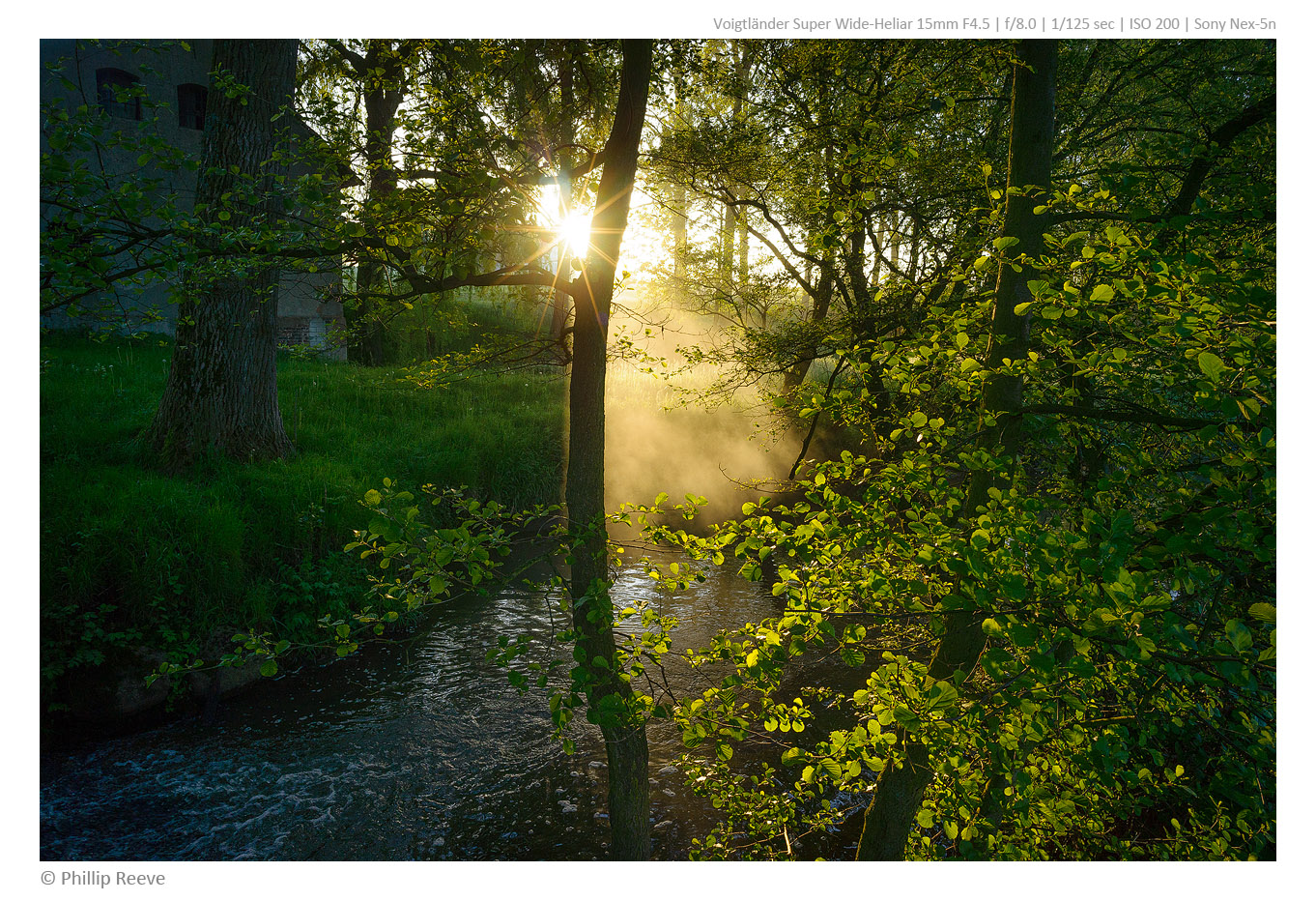
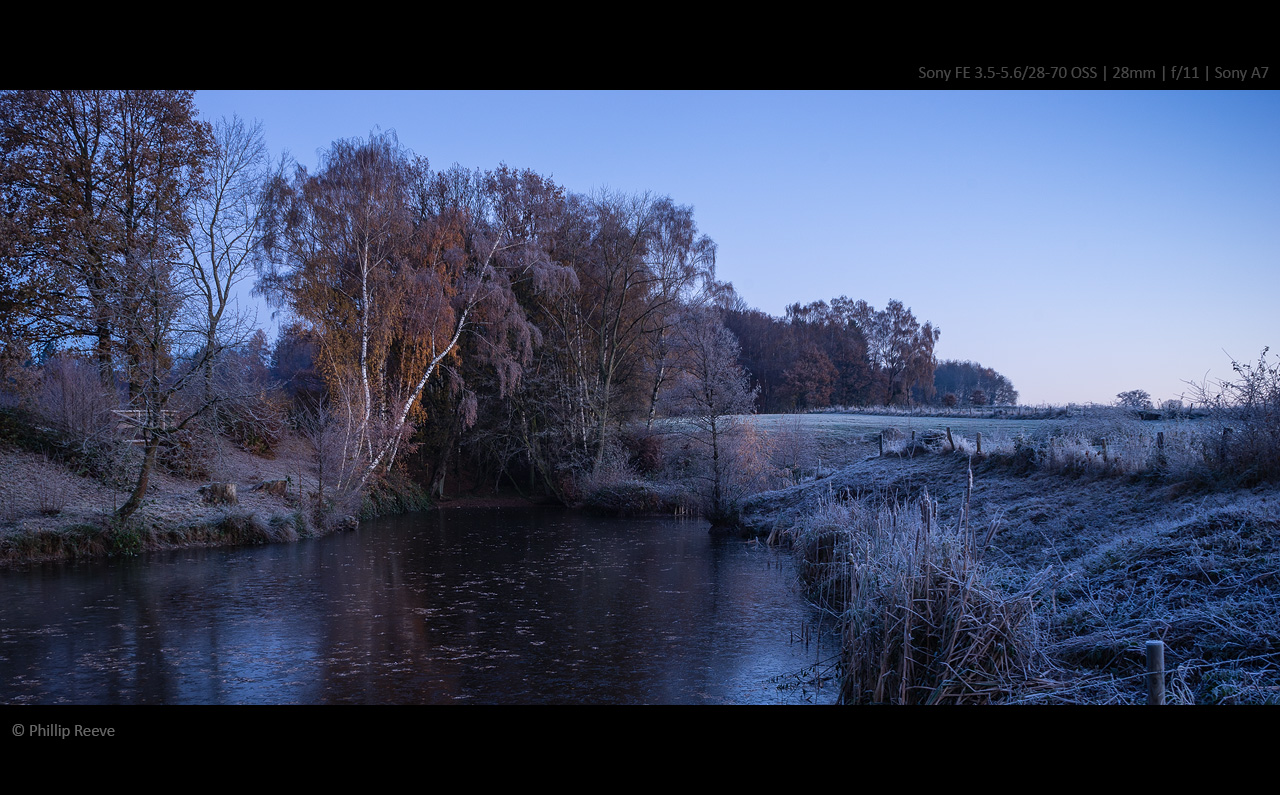
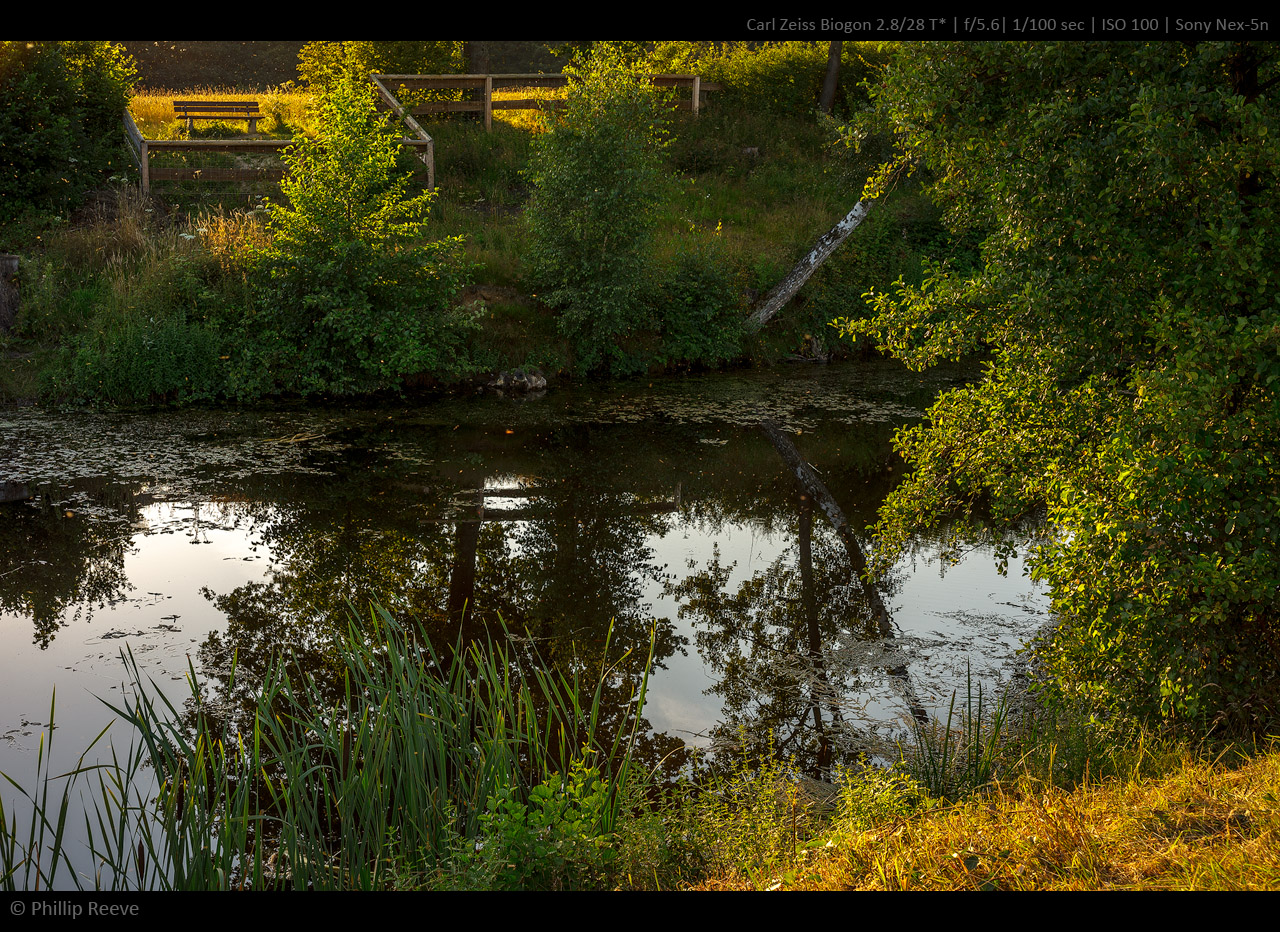
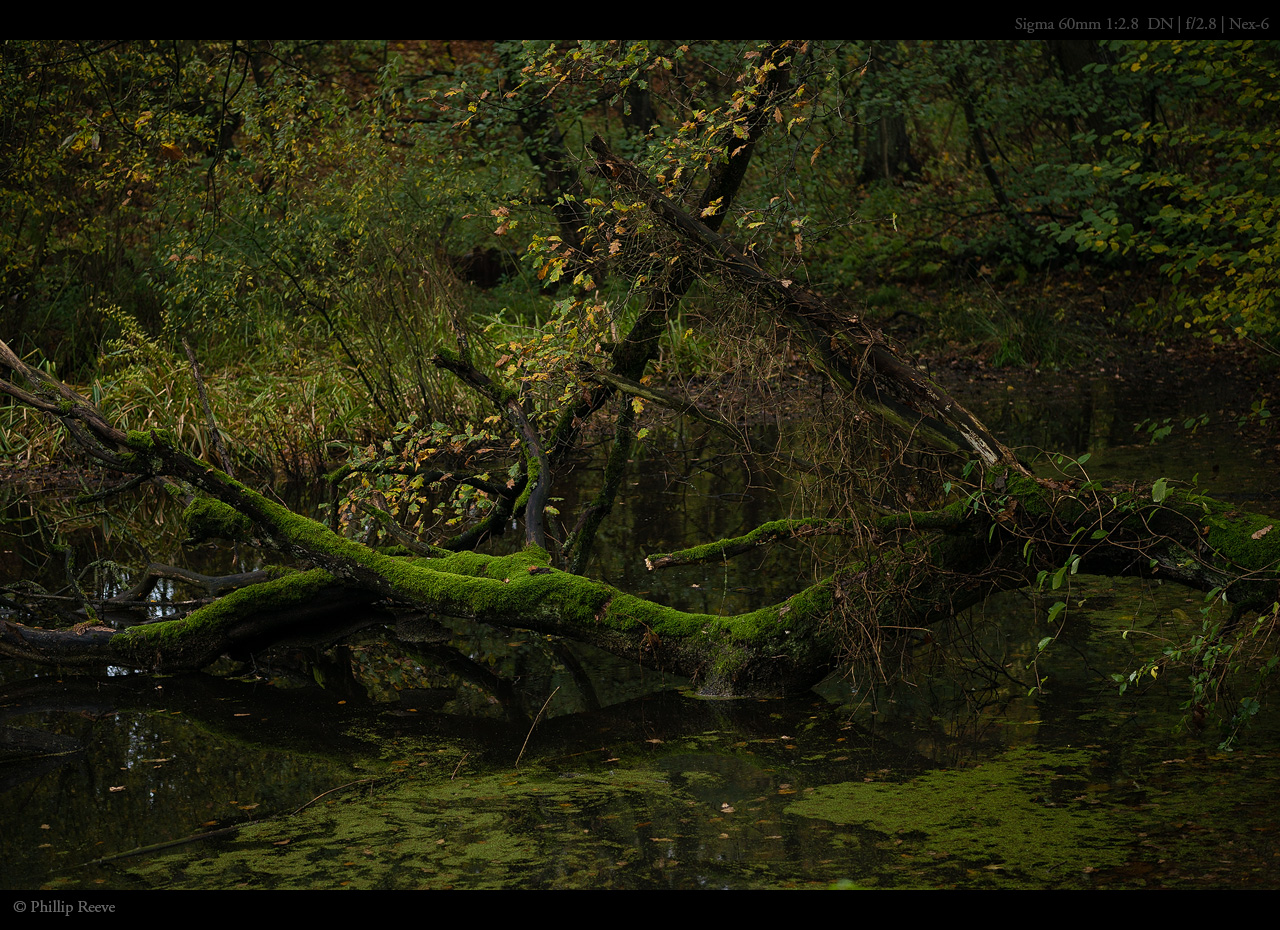
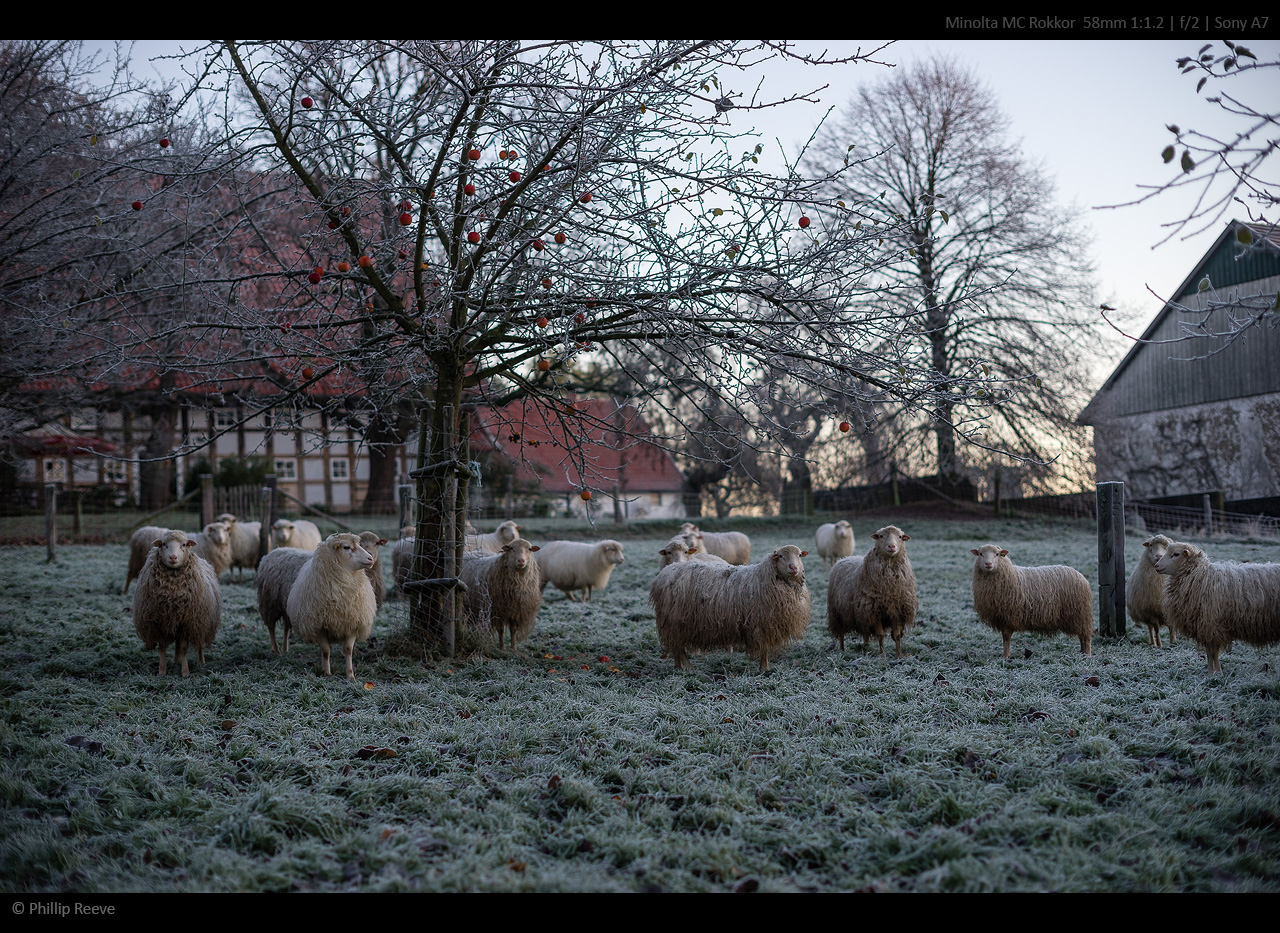
Well done!
Great post Philip! Really looking forward to Part 2!!
thanks Marc!
I’m a beginner, but I decided to take a dive with an A7. And so far I’m delighted by the results, but sadly they don’t quite look like yours. 😛
I begin to get a grasp on how to take a decent picture, but I would certainly need some advices on how to use Lightroom with this camera. Seems like it’s a “secret” each photographer keeps to himself, so quite happy to see you’re ready to share your insight on this. Can’t wait for the part 2, and thanks again for all the amazing pictures I could see on fredmiranda forums, I think you have a “thing”, they struck me each time.
Great job Phillip, I’ll read your next posts!!
very nice !
Tolle Bilder und mit viel Liebe geschrieben !
Hallo Phillip,
erst kaufe ich -ich habe vergessen zu zählen- viele Kameras, viele Linsen. Verkaufe sie immer wieder. Knirpse jahrelang mit MFT herum. Nie wirklich zufrieden. Dann lande ich endlich bei der A7, finde Deine Seite, Deine verschiedene Posts in den Foren…
Dann fange ich an, altes (Minolta) Glas zu kaufen, beherzige Deine Hinweise und was mache ich jetzt? Gute Bilder, mit denen ich endlich zufrieden bin.
Danke!!!
Ciao Roland
Das freut mich sehr 😉
Phillip
I appreciate how you’ve taken the whole first section to talk about the quality of light. I think it’s easily the most overlooked element in photography. As a new photographer, I always heard this whole “quality of light,” issue. As fundamental as it seems, it’s extremely hard to appreciate and master. Excellent exposition here Phillip. I just wanted to say thank you for so generously sharing your considerable knowledge and process. I am just trying to really focus on the light, as you have mentioned. I still have so much to learn.
Hi Philip! Really looking forward to Part 2! thanks
Excellent and so relatable! Beautiful shots.
Thank you for your sincere sharing of knowledge and experience.
Have been reading a few other articles and reviews by you.
The contents and images are very inspiring.
Just got a very new used A7 ten days ago and hope to gradually learn basic techniques from you.
good luck and light on your yourney!
Phillip, I don’t usually write reviews, but I feel compelled to leave a note complimenting you on your approach in desribing your processes. I, myself, am a beginner with a keen eye, and I find that the realistic -non lingo- way of explaining camera functionality, choosing a subject to shoot, lighting, settings, equipment, etc. is refreshing and learnable. Thanks for taking the time to put all of these articles together!
you are very welcome 🙂
Always love your images and honest reviews! I also have a passion for Landscapes and mostly use my Sony A7R II and Zeiss bats 18mm and 25mm
Thank you very much for sharing your and the other contributors’ experience and expert advice. It makes for great results and fascinating reading.
Gut Licht,
Woody Lemcke
Hallo Phillip,
ich wohne in Sindelfingen/Raum Stuttgart und bin in der Reinsburgstraße aufgewachsen. Immer wieder denke ich bei Deinen Photos: Mensch, das kennste doch, weiß aber dennoch nicht immer genau, wo sich Deine Motive tatsächlich befinden. Hast Du nicht Lust, die genaueren Locations zu beschreiben? Auch die anderen Locations in Deutschland, bzw. im Ausland würden mich öfters – aber nicht immer – interessieren. Ansonsten vielen herzlichen Dank für Deine Arbeit, ich weiß Deine Reviews sehr zu schätzen.